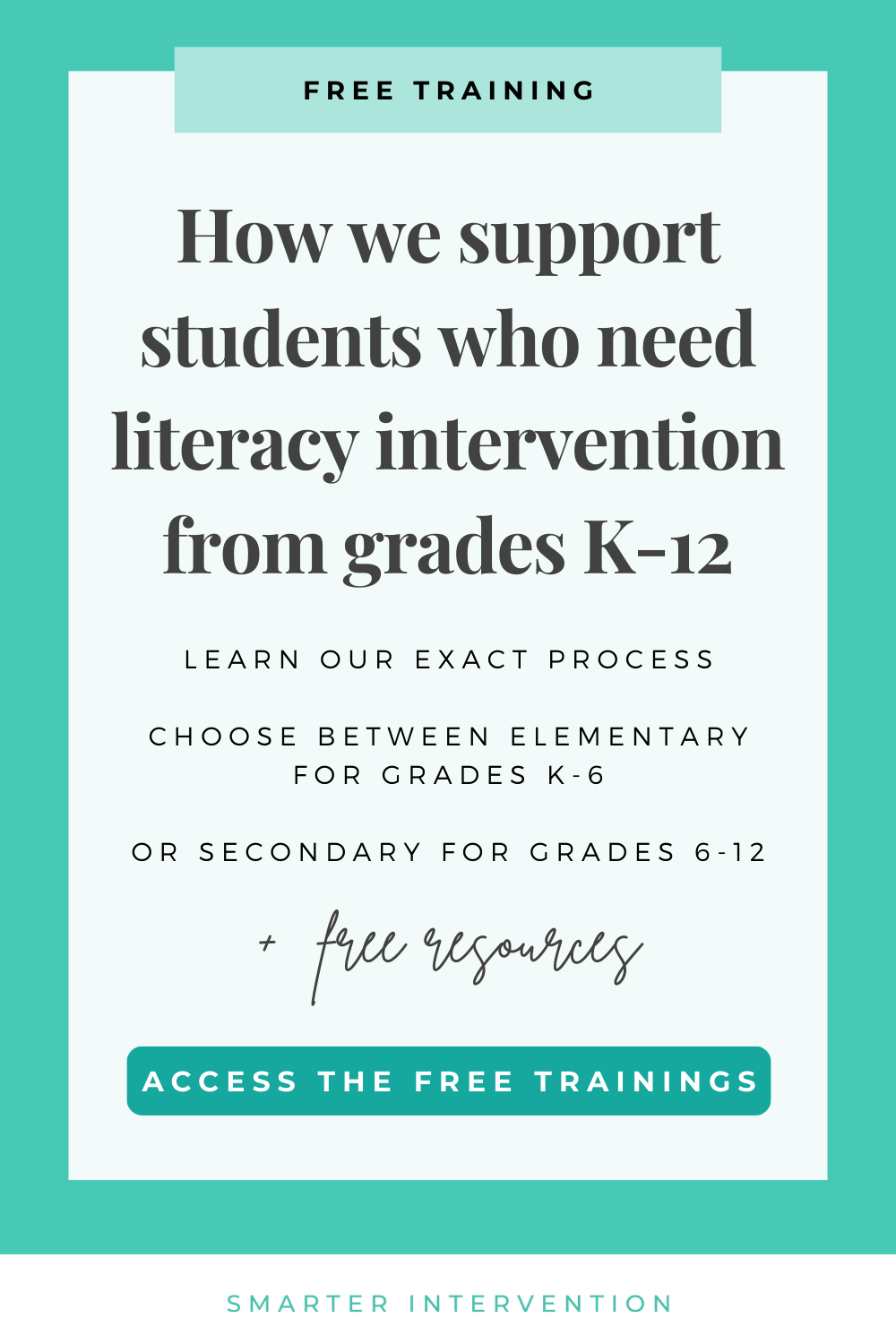Implementing Effective Literacy Intervention Lessons
Implementing effective literacy intervention lessons (or really just literacy instruction at all) can feel complicated. With all the research out there, it often feels like fitting it all in just creates chaos.
But, what if your literacy instruction didn’t feel so scattered?
Now, when students struggle, it’s tempting to keep switching strategies, pulling a tool from here, an idea from there, hoping something will click.
But in reality, what students need most is consistency. And that starts with explicit routines. Clear, repeatable steps for how you introduce, model, and practice each skill.
Not only does this support student learning, it also reduces your cognitive load as an educator. You stop scrambling for what to teach and instead follow a structure that works.
In this post, we’ll show you exactly what explicit routines look like across the five core components of reading (plus writing) with routines you can use right away.
What Do We Mean by Explicit Routines?
Predictable doesn’t mean boring; it means effective.
Explicit routines are structured, consistent processes you follow each time you teach a skill. Instead of starting from scratch every lesson, you follow a flow that students come to know and trust.
This helps students:
Focus on the content, not the format
Gain confidence through repetition
Make faster progress because instruction is clear and connected
And it helps you:
Reduce prep time
Deliver stronger instruction
Keep your intervention focused and intentional
What do explicit structured literacy routines look like?
We have routines for each of the 5 Core Components of Literacy (phonological awareness, phonics, vocabulary, fluency, and comprehension) + writing. We’ll walk you through what our routines look like:
Phonological Awareness
We use phonological awareness instruction as our “warm-up” for our lesson.
We always incorporate 10 questions targeting segmenting, blending, manipulating, isolating, etc.
You can get a copy of our exact routine and some sample questions in this free resource!
Phonics
We start with a sound drill reviewing previously taught phonogram patterns using flashcards or digital slides
Next, we review words with previously instructed phonogram patterns
Then, we introduce our new phonogram pattern. When we introduce a new pattern we always use the same format:
_______ (pattern) has _________ (number of sounds). _______ (pattern) says __________ (sounds). We find this pattern at the ____________ (beginning, middle, end) of words. We typically find this pattern in ______________ (syllable types).
After, we have students read words in isolation containing the pattern.
We start with single-syllable words
We progress to multisyllable words immediately after for students who are ready
Then, we have students practice reading words in sentences, paragraphs, passages
Finally, we ask students to look for the pattern EVERYWHERE (e.g., math, science, video games, etc.)
Vocabulary
We have students rate their knowledge of words on a 1-4 Receptive Vocabulary Rating Scale
1 = I’ve never seen/heard of this word
2 = I’ve seen/heard the word but don’t know what it means
3 = I’ve seen/heard the word and have some knowledge of what it means
4 = I’ve seen/heard the word and can define it)
Next, we have students work to formulate a definition for the word using our Vocabulary Framework
Category = What group does it belong to?
Function = What is its purpose
Synonym = What is it similar to?
Antonym = What is it opposite from OR what makes it different from what it’s similar to?
You can get a copy of our Receptive Vocabulary Rating Scale & Vocabulary Framework here!
Fluency
We have students practice phrasing sentences
Breaking them into who or what (subject), did what (predicate), when/where/why/how (adverbial phrase or clause).
Then, we have them practice reading the sentences with different punctuation or expression
Finally, we have students work on repeated reads to build fluency at the sentence level, paragraph level, and beyond.
You can grab a copy of our fluency phrasing routine graphic organizer here!
Comprehension
We have students work through a 3-Part Process
Before reading
This is where we discuss text features, background knowledge, and preview the text
During reading
This is where we use annotation strategies and focus on decoding/vocabulary awareness
After reading
This is where we work through our Structured Comprehension Guide that walks through 5 levels of comprehension moving from Recall, Organize, Connect, Leap, and Analyze.
You can grab a copy of our Structured Comprehension Guide here.
Writing
Because reading and writing are reciprocal processes, we always teach these skills together. Once we work through our reading portion of our lesson, we complete a mirror of those processes through writing.
Auditory Drill (the reverse of the sound drill - we tell students a sound and they have to produce the written letters (grapheme).
Spelling (focusing on the target pattern)
Sentence writing using the subject/predicate/adverbial phrasing framework
Paragraph Writing
Brainstorm
Draft
Revise
Do You Need a Routine for Every Component?
Yes—and no. You don’t need a separate, rigid routine for each component. But you do need a consistent approach that students internalize. We absolutely mix things up within this framework; we may try to gamify the different components or move more quickly or slowly through certain parts, but for the most part…everything stays within these routines.
So there you have it, there are our routines!
Want to see exactly how explicit routines look in practice?
That’s what we walk through step by step in our Free Delivering Effective Literacy Intervention Training (elementary and secondary versions available).
You’ll leave with clear lesson structures and routines you can start using immediately. Plus you’ll get a free professional development certificate! It’s a win win.


